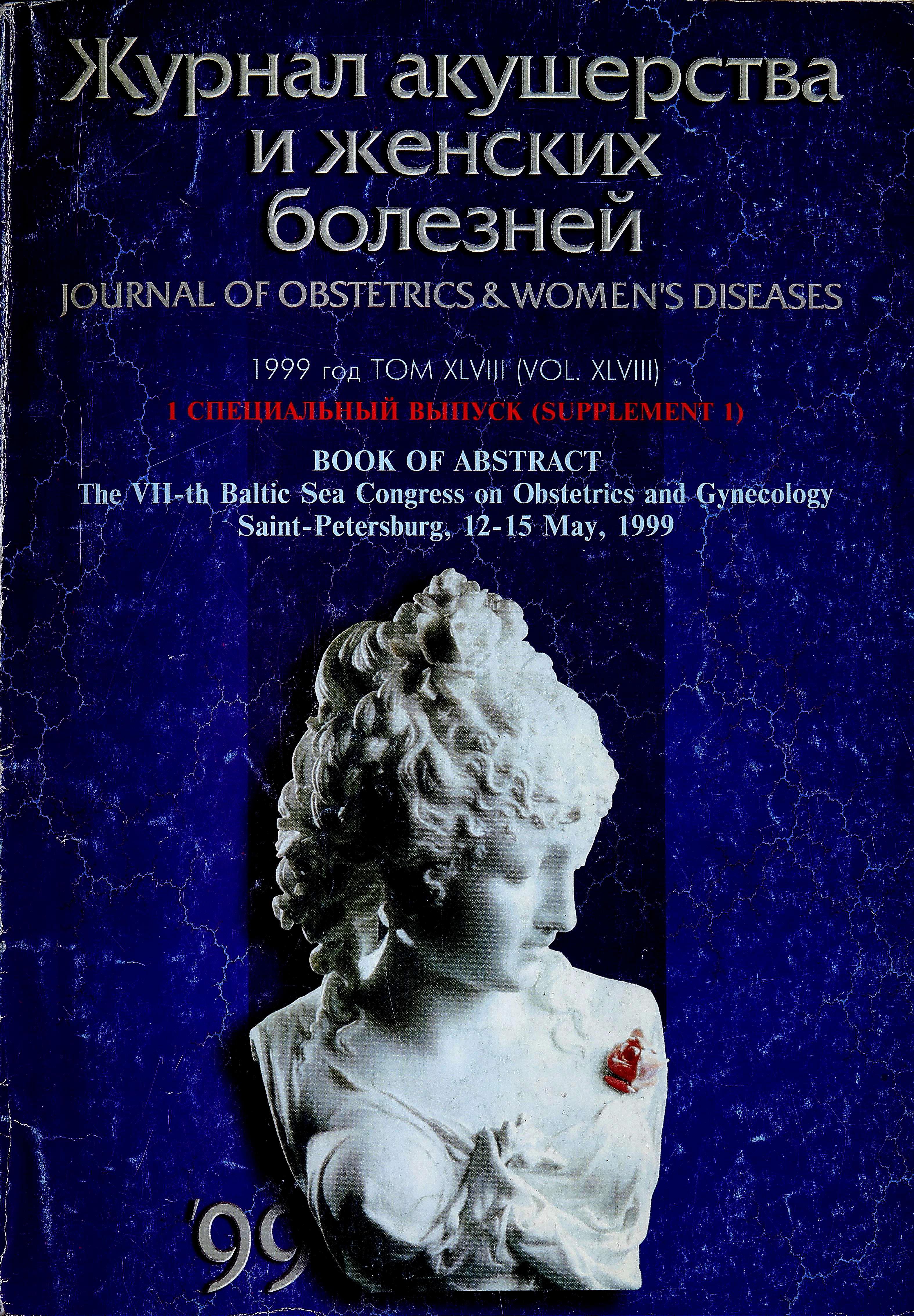I. Immaturity of the lungs: neonatal perspective - development of the lung
- Authors: Liubsys A.1
-
Affiliations:
- Vilinus University Children's Hospital
- Issue: Vol 48, No 5S (1999)
- Pages: 99-99
- Section: Articles
- Submitted: 17.02.2022
- Accepted: 17.02.2022
- Published: 15.12.1999
- URL: https://journals.eco-vector.com/jowd/article/view/101052
- DOI: https://doi.org/10.17816/JOWD101052
- ID: 101052
Cite item
Full Text
Abstract
Despite dramatic improvement in the three past decades in the perinatal care hyaline membrane disease and RDS continue to be a major cause of morbidity and mortality of premature babies accounting 28-70% of neonatal deaths. Immaturity of the lungs is the main predisposing factor for development of chronic lung disease in as many as 20% of survivors. Therefore, maturation of the lungs is still a primary concern for the obstetrician who is taking care of the pregnant women as well, as for the neonatologist responsible for the care of the newborn baby.
Full Text
Despite dramatic improvement in the three past decades in the perinatal care hyaline membrane disease and RDS continue to be a major cause of morbidity and mortality of premature babies accounting 28-70% of neonatal deaths. Immaturity of the lungs is the main predisposing factor for development of chronic lung disease in as many as 20% of survivors. Therefore, maturation of the lungs is still a primary concern for the obstetrician who is taking care of the pregnant women as well, as for the neonatologist responsible for the care of the newborn baby.
Development of the lung. The development of the lung begins in the 24- to 25-day-old embryo as an outpouching of the gut. Up to 16h week of gestation (embryonic and pseudoglandular phases) lung’s grow consists of further branching of the endodermal tube into surrounding mesenchyme. By the end of this phase, a total of about 20 generations have developed and the last eight generations being called bronchioles. At 16-17 weeks of gestation canalicular period of lung development begins. The canalization of the primitive airways progresses. Up to 28th week of gestation basic structure of gas-exchanging portion of the lungs is formed and vascularized. However, prior to approximately 23 to 24 weeks of gestation, airway and capillary proliferation are insufficient for gas exchange and this gestational age remains the lower limit for extrauterine survival in most infants. At about 28 weeks penultimate stage of lung development begins (saccular period). There is a marked decrease in the prominence of the interstitial tissue and airspace walls become narrow and more compact with sudden increase in lung volume and surface area. Starting from 36 weeks (alveolar period), true alveoli begin to arise from alveolar ductus and subsaccules become alveoli. At term gestation about 50 million alveoli are present (alveoli increase in number until approximately 8years of age reaching adult number of 300 million).
Initially the future acini are lined with cuboidal epithelium. By 18 to 20 weeks of gestation granular pneumocytes (type II cells) can be distinguished by appearance of lamellar inclusions. These cells are the site of surfactant synthesis. Flattened membranous pneumocytes (type I cells), the site of gas-exchange, first appear at 23-24 week of gestation.
About the authors
A. Liubsys
Vilinus University Children's Hospital
Author for correspondence.
Email: info@eco-vector.com
Lithuania, Vilinus
References
Supplementary files







